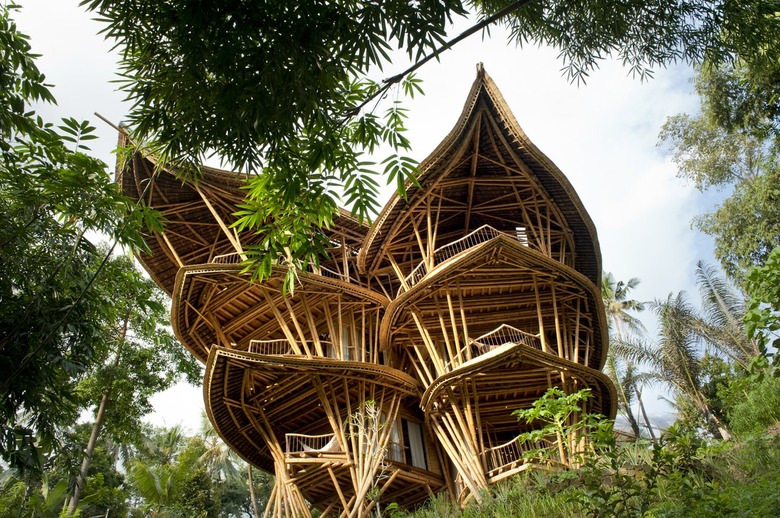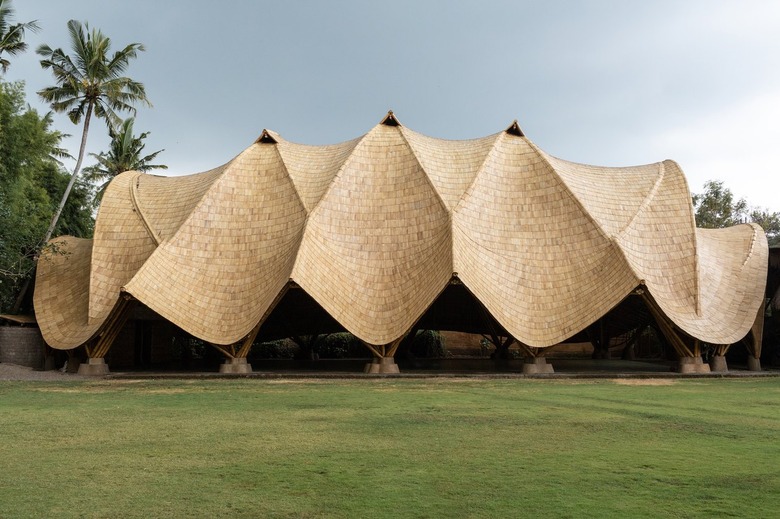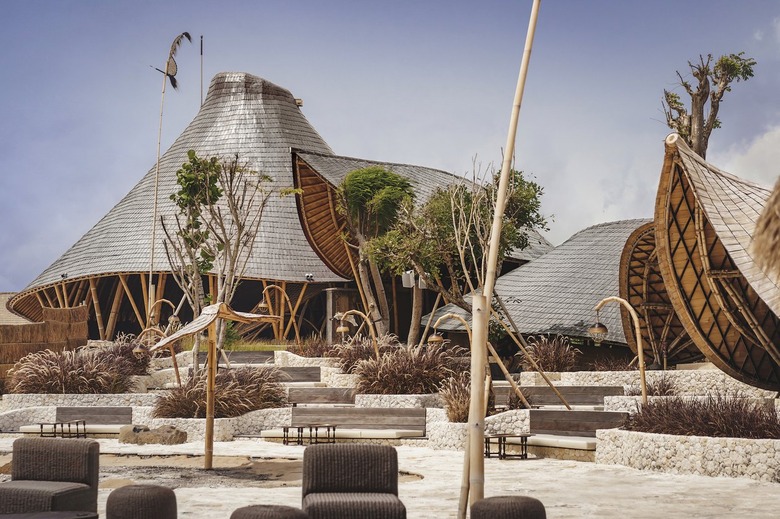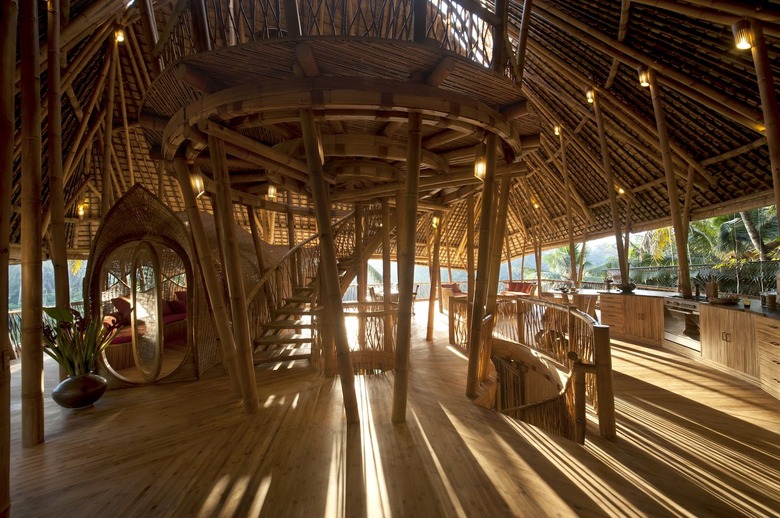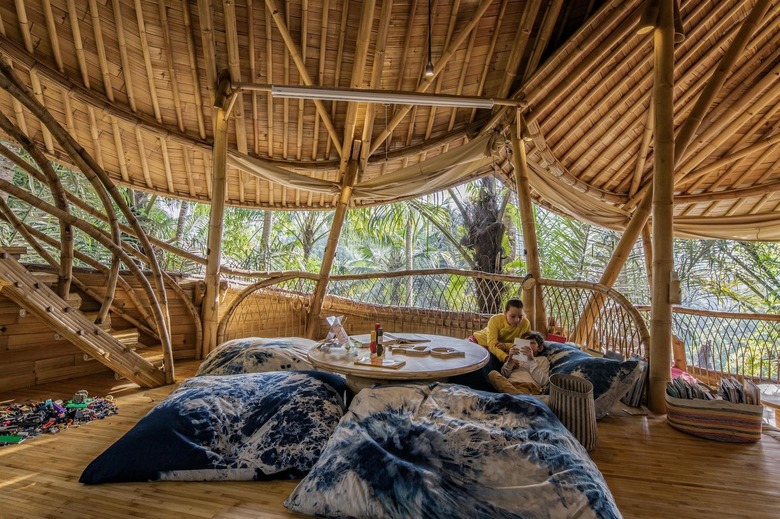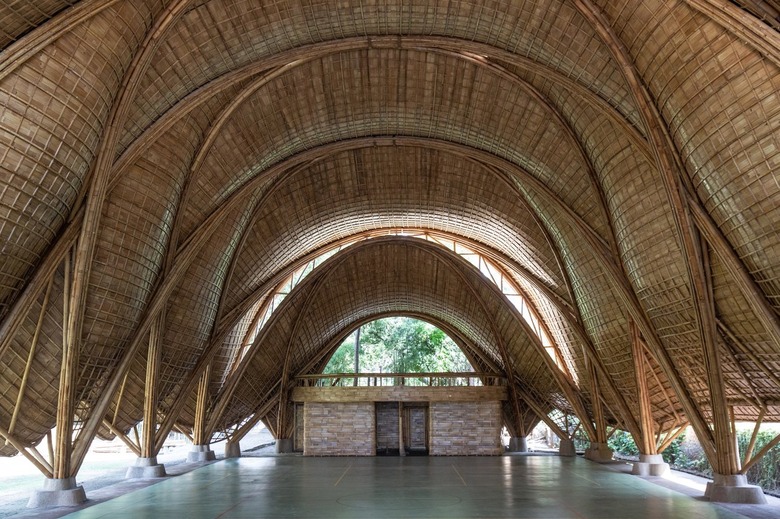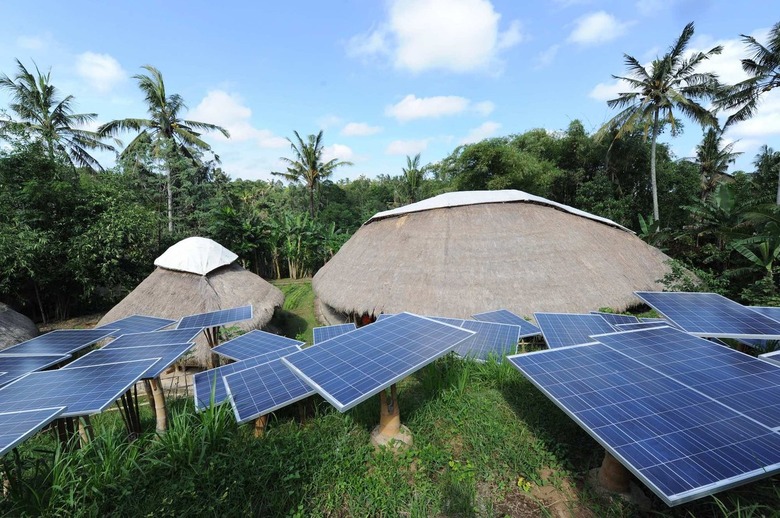IBUKU Creative Director Elora Hardy On The Bond Between Eco-Architecture And Womanhood
What if we told you there was a natural, renewable building material that has the tensile strength of steel and the compressive strength of concrete? What if we told you that this same material is lightweight and earthquake-resistant and grows at a rapid rate, making it a sustainable, durable, and easy-to-source medium? This all might sound too good to be true, but it isn't; in fact, what we're referring to is a well-known plant you might even have artfully displayed around your home right now. The material we're describing is none other than bamboo.
Bamboo has been used as a trusted building material in tropical regions of the world for tens of thousands of years, but IBUKU, an eco-architecture firm in Bali, has recently shed much-deserved light on the awesome power of bamboo in staggering fashion. With bamboo as the main material at the core of each of their magnificent designs, IBUKU is on a mission to share the importance of environmentally conscious architecture that is achievable through creativity and thoughtfulness. The firm is composed of a team of designers, architects, and artisans who collaborate to explore innovative ways of designing with natural materials to build homes, hotels, schools, and event spaces around the world, led by founder and creative director Elora Hardy.
Hardy is not shy about her love of bamboo, which is at the root of IBUKU's success.
"Bamboo will treat you well if you use it right," Hardy declared to a packed auditorium during a TED Talk she gave in 2015. "No two poles are alike, no straight lines, no two-by-fours here," she continued. "The tried and true, well-crafted formulas and vocabulary of architecture do not apply here. We've had to invent our own rules. We ask the bamboo what it's good at, what it wants to become. And what it says is respect it, design for its strengths, protect it from water, and make the most of its curves."
Hardy and her team have built over 200 structures in Bali and around the world, including those pictured throughout this article: The Arc at Green School; sustainable beach wonderland Mari Beach Club; the tallest bamboo structure in Bali, Sharma Springs; and Sunrise House and Echo House, both at the Green Village compound in Bali. Each of their projects is more impressive than the last and serves as a building block for further innovation both in Bali and beyond. IBUKU continues to explore an ever-expanding palette of natural and sustainable materials, though bamboo, of course, remains the star of the show.
Hardy says that IBUKU's bamboo-fueled ethos revolves around their goal to create spaces in which people can live in an authentic relationship with nature. "We do this by designing fully functional homes and furniture that are made of natural substances and built in ways that integrate with nature," she tells Hunker.
"Designing is not only creating aesthetically beautiful and amazing features but also indirectly creating the interactions between humans and nature." — Sharon Julya
Sharon Julya, Hardy's colleague and an architect at IBUKU, elaborates that sustainable architecture requires a high level of awareness for the way every element of a design affects its environment. "As architects and designers, we are responsible for the changes we impose on the site where our materials are sourced and what kind of quality of life we want to achieve from the design we create," Julya tells Hunker. "Designing is not only creating aesthetically beautiful and amazing features but also indirectly creating the interactions between humans and nature."
It's not lost on Hardy that with the power to design and build structures all over the world comes the great responsibility of doing so with love and care.
"As designers, we are creating the world, creating the future, and we have a say," she says. "We each have a conscience, and we aspire to be well remembered and admired when people in the future look back at our work and impact. In the future, people will look back and wonder, 'What were people thinking? They saw the problems coming; why didn't they change faster?' Designers have a responsibility to be innovative and push for the best results, even to think bigger than the immediate project brief or the current conventions of architecture and construction to make something new possible. The only future worth fighting for is a beautiful one, and beauty only counts when it forever supports Earth as our home."
"The only future worth fighting for is a beautiful one, and beauty only counts when it forever supports Earth as our home." — Elora Hardy
The eco-architecture space is driven in large part by the likes of brilliant women like Hardy, making the fact that Women's History Month in March is followed by Earth Month in April all the more fitting. Writer, strategist, and co-author of the 2007 book Women in Green: Voices of Sustainable Design, Kira Gould, is an expert on women leadership in the sustainable design field. She and her co-author, Lance Hosey, interviewed hundreds of women and men to explore women's general preponderance for eco-architecture.
"While there are some interesting studies that show that women care more about environmental issues than men (in the general public)," Gould tells Hunker, "I think the reasons in the field at the time [of the book's publication] had more to do with [women] being willing to explore an area that was somewhat unknown and one that required significant collaboration across disciplines and a high degree of communication."
In the introduction of Women in Green, Gould and Hosey list a number of "feminine principles" of sustainability. (Of course, these principles can also apply to those who do not identify as women or "feminine.") They are as follows:
- It's about sensibilities more than it is about gender or sex.
- It isn't divisive; it's inclusive. It's not fragmented; it's holistic. It's about synthesis.
- It's about collaboration and building community. It's not about things; it's about relationships. It's not about products; it's about process.
- It's about grassroots, building from the bottom up, not proclamations from above. It's about interaction and dialogue, not solitary vision.
- It's about changing the status quo. Innovation requires new ways of thinking and doing.
- It's about long-term evolution, not the quick fix.
- It's about versatility and balance, adapting, and improvising. It's not about single-mindedness.
- It's about deep-rooted respect and wonder. It's not about opportunism; it's about opportunity for all.
Hardy adds that she sees many innate qualities that are common in women as superpowers when it comes to eco-architecture. Even the adversity women have faced serves them in this field.
"Qualities of openness, collaboration, and inclusivity have been called feminine, and if that's so, then women now have an advantage." — Elora Hardy
"Women are still underestimated and undervalued in most fields," she explains. "Used to being doubted, we also question ourselves. In architecture, this can be an inconvenience, but it's also a gift. For a healthy future, everything needs rethinking. The righteousness of the archetypal 20th-century architect did not serve society or the natural world well. I do not aspire to embody that persona for my clients either, however efficient it may seem to be. Qualities of openness, collaboration, and inclusivity have been called feminine, and if that's so, then women now have an advantage. To stop and question why things have been the way they have been [and] to consider how they could be reinvented and reimagined [are] at the heart our chance for a beautiful world."
